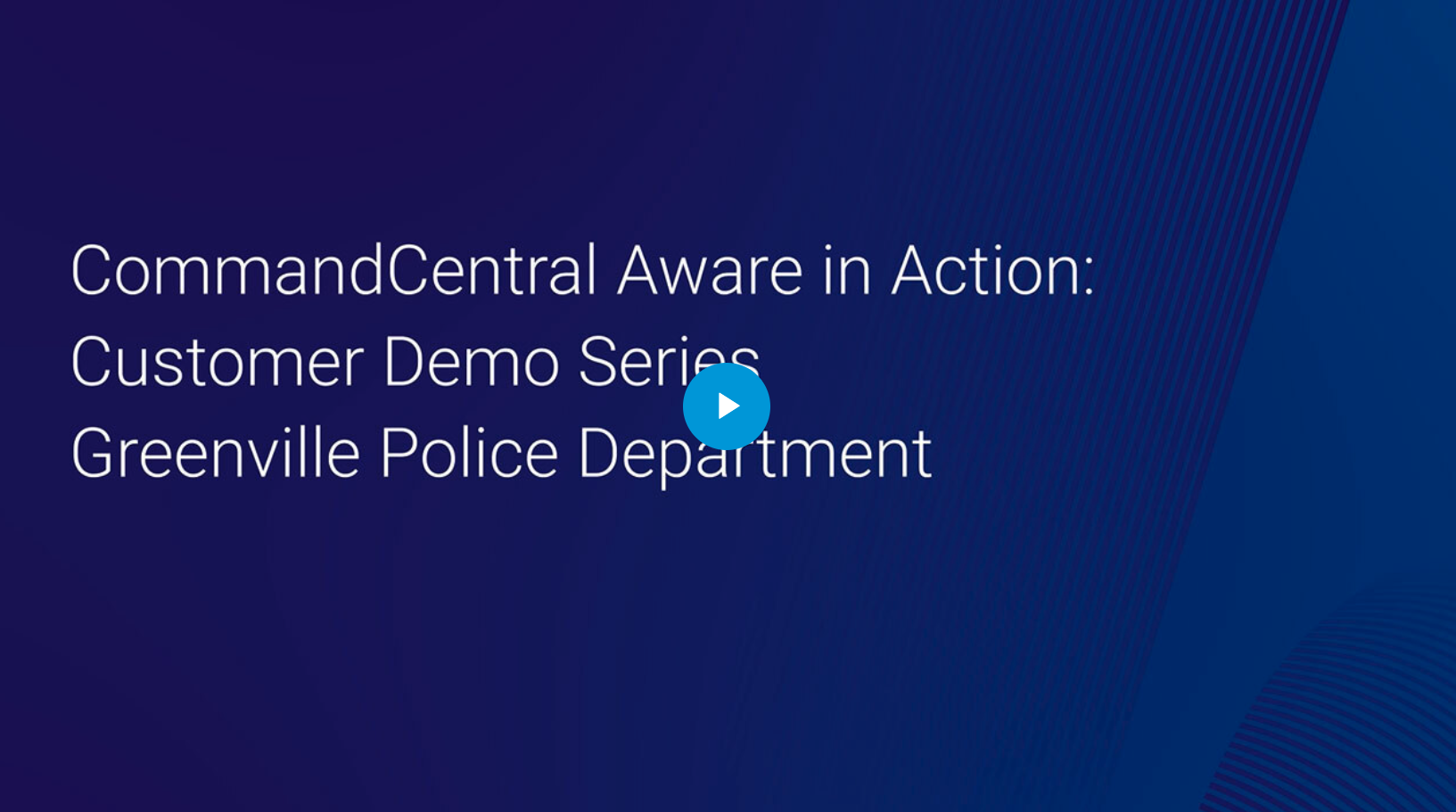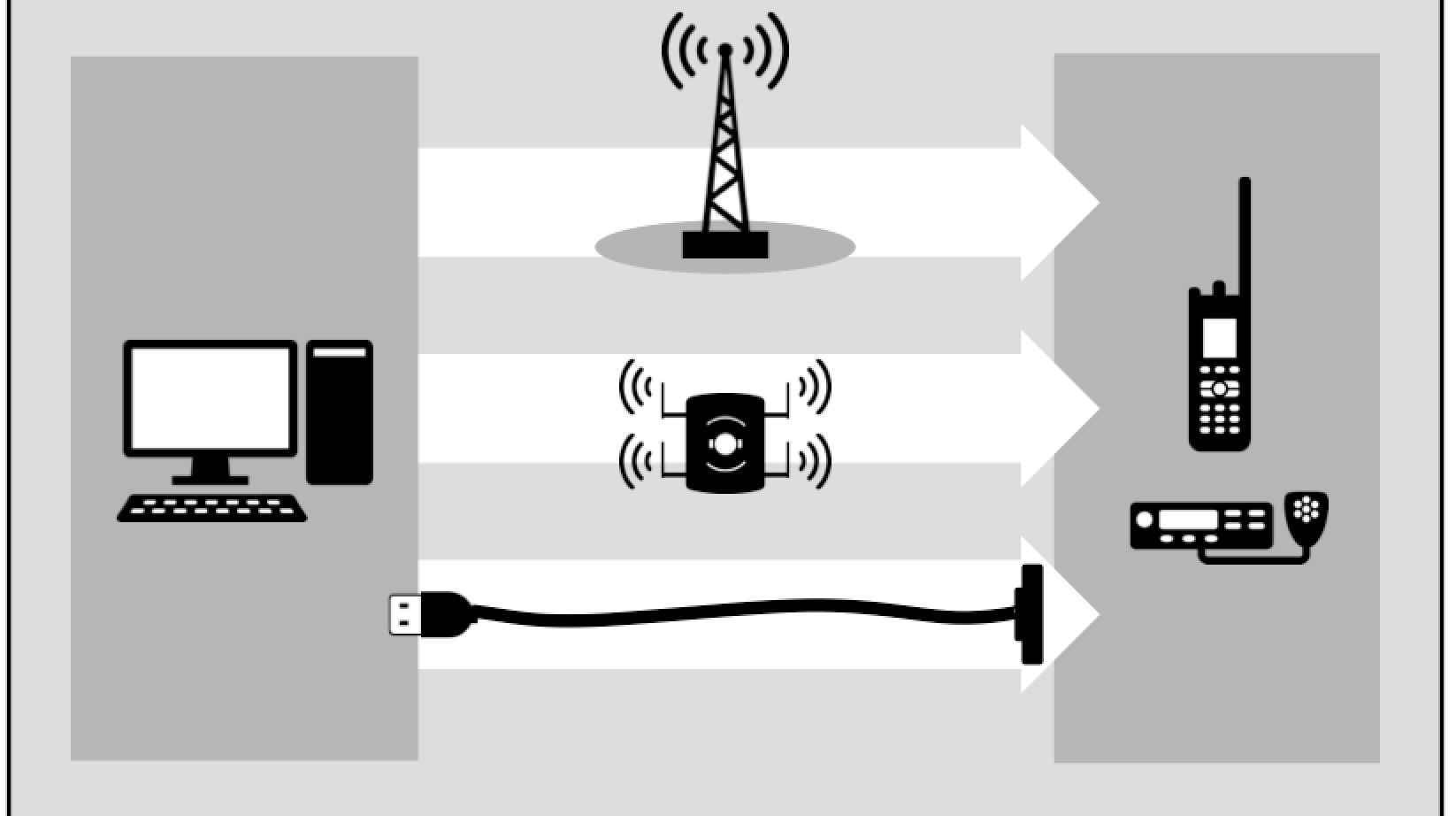In the demanding world of public safety, efficiency isn’t just a buzzword; it’s an essential component of officer safety, swift response, and successful outcomes. For agencies leveraging Motorola Solutions’ CommandCentral Aware, the experience of the Greenville Police Department offers a powerful illustration of how integrated radio tracking and advanced mapping capabilities can significantly enhance daily operations and emergency responses.
Sergeant Dennis Grimsley, who leads Greenville PD’s Real-Time Crime Center (RTCC), provides invaluable insights into how they’ve optimized CommandCentral Aware, setting a precedent for other departments to follow.
Real-time situational awareness: the foundation of efficiency
Greenville PD’s journey with CommandCentral Aware began with the deployment of Motorola APX NEXT radios, equipped with GPS capabilities viewed directly through the platform.
“Here in the Real-Time Crime Center, we use CommandCentral Aware to look at the officers’ locations, and our dispatchers do so as well,” explains Sergeant Grimsley.
Consider a critical incident: a high-speed vehicle pursuit from a neighboring town that entered Greenville’s jurisdiction. The suspect was driving “excess of a hundred miles an hour going the wrong way down the interstate… with no headlights on.” As Greenville officers began to assist, the suspect drove into a dead-end neighborhood, ultimately barricading himself inside his apartment, claiming to be armed and to have booby-trapped the premises.
As the assistant commander of the SWAT team, Sergeant Grimsley responded. From his patrol vehicle, he could access CommandCentral Aware on his laptop. “I was able to see that officers had a sufficient perimeter on that building. And make sure that there were no holes that we needed to plug,” he recounts. This ability to remotely verify containment ensured officer safety and prevented the suspect’s escape or civilian injury, leading to a successful resolution with no injuries.
Optimizing resource deployment: seconds save lives
CommandCentral Aware transforms reactive response into proactive resource deployment. Sergeant Grimsley highlights how the system facilitates immediate visual cues for supervisors. “Anybody who’s ever been in charge of any kind of assignment or a situation, and you give a blanket order, ‘Hey, I need someone to go do this…’ With CommandCentral Aware, I can look at the map, see who’s closest to the objective that I need done and directly speak to that officer or operator.” This eliminates delays and provides a real-time picture of actions being taken.
This efficiency also extends to everyday scenarios where officers are navigating unfamiliar territory. In one instance, an officer unfamiliar with a specific “grid” area of the city initiated a traffic stop with an ATV driver. The officer, focused on the violator, struggled to pinpoint his exact location, simply stating, “I’ll be out with the ATV…somewhere on Willow Street.” Sergeant Grimsley, watching the officer’s location in CommandCentral Aware, immediately “called out where he was” and dispatched backup units that were “three or four blocks away”, ensuring rapid assistance in what could have become a problematic situation in snowy conditions.
Empowering dispatchers: the eyes in the command room
Sergeant Grimsley notes that dispatchers are discouraged when they feel like they can’t help in a situation. CommandCentral Aware directly addresses this by providing dispatchers with visual access to officer locations.
He recounts an incident where a newer officer initiated a traffic stop on a major highway. The driver immediately jumped out and began challenging the officer, who could only broadcast the license plate and vehicle description. “The next thing you hear is yelling on the radio.”
While the officer was engaged, dispatchers who had the “forethought to jump on to CommandCentral Aware immediately and see where he was at” were able to broadcast his precise location, enabling other officers to arrive quickly. This ability for dispatchers to see officer locations, regardless of whether the officer can verbally communicate, is “paramount to proper officer safety.”
Beyond daily operations: strategic applications and future potential
1. Wide Area Searches
For missing persons or suspects fleeing into wooded areas, CommandCentral Aware’s historical map allows supervisors to “play it back over a certain time period and see what’s being covered” by officers’ GPS. This ensures thorough coverage and helps maintain perimeters.
Watch this demonstration video on how Greenville PD used CommandCentral Aware during a missing person search:
2. Plainclothes Officer Safety
Detectives in plainclothes, even with radios, can be difficult to locate in a crowd or wooded area. CommandCentral Aware allows supervisors to “narrow their location, and walk in those other officers to get help to them quickly.”
3. Navigating Complex Environments
Malls, for instance, can be disorienting for responders. If an incident occurs at a specific kiosk, CommandCentral Aware allows for “being able to give [exact location] accuracy…to respond to officers that help is coming.” This can save crucial seconds in response times. “I don’t know how you could beat it.”
Greenville PD is also actively working on integrating local camera feeds, including those from businesses and schools, into CommandCentral Aware. This integration will provide a holistic view, allowing RTCC personnel to monitor situations and broadcast information to responding officers, reducing the need for officers to pull up cameras on their in-car laptops while driving.
Setting up for success: key takeaways
For other agencies considering or already using CommandCentral Aware, Greenville PD’s experience offers valuable advice:
- Invest in LTE-capable radios: Sergeant Grimsley strongly advocates for LTE-enabled radios like the APX NEXT. “An LTE device will give you that real time and very quick refresh rate, anywhere from three to four seconds when it comes to real time location,” he states, significantly improving coverage and GPS accuracy compared to older systems.
- Prioritize dispatcher access: Empowering dispatchers with CommandCentral Aware visibility is important for officer safety and rapid response.
- Establish clear permissions: CommandCentral Aware is permissions-based. While dispatchers and supervisors have broad access to officer locations, limiting peer-to-peer visibility among officers can help maintain focus.
- Embrace continuous training and adaptation: As a relatively new tool, agencies are “still building on” lessons learned. Regular testing and adaptation to your agency’s specific needs and existing programs are essential.
Greenville PD’s journey with CommandCentral Aware demonstrates that investing in radio tracking technology is an investment in efficiency, safety, and ultimately, the ability to serve the community more effectively. By following their lead, your agency can unlock the full potential of your system, ensuring your officers are always visible, supported, and positioned for success.
Learn more about CommandCentral Aware or log in to CommandCentral Aware.





